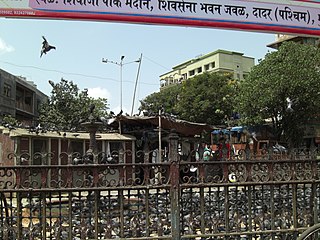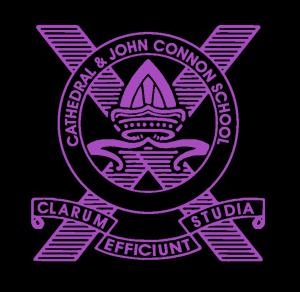
Mumbai is the capital city of the Indian state of Maharashtra and the de facto financial centre of India. According to the United Nations, as of 2018, Mumbai is the second-most populous city in India after Delhi and the eighth-most populous city in the world with a population of roughly 2 crore. As per the Indian government population census of 2011, Mumbai was the most populous city in India with an estimated city proper population of 1.25 crore (12.5 million) living under the Brihanmumbai Municipal Corporation. Mumbai is the centre of the Mumbai Metropolitan Region, the sixth most populous metropolitan area in the world with a population of over 2.3 crore. Mumbai lies on the Konkan coast on the west coast of India and has a deep natural harbour. In 2008, Mumbai was named an alpha world city. It has the highest number of millionaires and billionaires among all cities in India. Mumbai is home to three UNESCO World Heritage Sites: the Elephanta Caves, Chhatrapati Shivaji Maharaj Terminus, and the city's distinctive ensemble of Victorian and Art Deco buildings designed in the 19th and 20th centuries.

Bandra ([bæːɳɖɾa]) also known as Vandre ([ʋaːn̪d̪ɾe]) is an upscale coastal suburb located in Mumbai (Bombay) area of the Konkan division, Maharashtra, India. The suburb is located to the immediate north of River Mithi, which separates Bandra from Mumbai City district. It is the third-largest commercial hub in Maharashtra, after Bombay city district& Poona (Pune), primarily aided by the Bandra-Kurla Complex.

The Gateway of India is an arch-monument built in the early 20th century in the city of Mumbai, India. It was erected to commemorate the landing of King-Emperor George V, the first British monarch to visit India, in December 1911 at Ramchandani Road near Shyamaprasad Mukherjee Chowk.

Dadar ([d̪aːd̪əɾ]) is a densely populated residential and shopping neighbourhood in Mumbai. It is also a prominent railway and bus service hub with local and national connectivity. Dadar holds the unique distinction of being Mumbai’s first planned area, and is a hub for the city's Marathi culture.

Kurla is a neighbourhood of East Mumbai, India. It is the headquarters of the Kurla taluka of Mumbai Suburban district. The neighbourhood is named after the eponymous East Indian village that it grew out of. It falls under Zone 5, Ward 'L' of the Bombay Municipal Corporation. Its railway station, spelt as Coorla until 1890, is one of the busiest on the Mumbai suburban railway on the central and harbour railway lines of Mumbai as is the Lokmanya Tilak Terminus (LTT) for out-station passenger/express trains.

Santacruz or Santa Cruz is a neighbourhood of Mumbai. The Santacruz railway station on the Mumbai Suburban Railway, the domestic terminal (T1) of the Chhatrapati Shivaji Maharaj International Airport, and one campus of the University of Mumbai, are all located in Santacruz (East).
Byculla is an area of South Mumbai.

South Mumbai, colloquially SoBo from South Bombay in Anglo-Indian English, administratively the Mumbai City District, is the city centre and the southernmost precinct of Greater Bombay. It extends from Colaba to Mahim neighbourhoods, and comprises the city's main business localities, making it the wealthiest urban precinct in India. Property prices in South Mumbai are by far the highest in India and among the highest in the world.
Mazagaon, also spelled Mazgaon and Mazagon, and pronounced by the Catholics as 'Mazgon' or 'Maz-a-gon' and the Marathi-speakers as Mazgav, is one of the seven islands of Mumbai. It is part of South Mumbai and can be reached by Byculla Station on the Central railway line and Dockyard Road Station on the Harbour Railway line. Located in Mazagaon are maritime companies like the Bombay Port Trust and Mazagaon Dock Ltd., the Mazagaon Court and Anglo-Indian schools including Rosary High School, St. Peters School, Antonio D'Souza High School, Diamond Jubilee High School and St. Mary's School.

Fort Bassein is a ruined fort of the town of Vasai (Bassein), Maharashtra, India. The structure was formally christened as the Fort of St. Sebastian in the Indo-Portuguese era. The fort is a monument of national importance and is protected by the Archaeological Survey of India.

St. Thomas Cathedral, Mumbai, is the 300-year old cathedral church of the Diocese of Mumbai of the Church of North India. It is named in honour of Saint Thomas the Apostle, who is believed to have first brought Christianity to India. The cathedral is located in Horniman Circle, the historic centre of Mumbai. It is in close proximity to famous Mumbai landmarks such as Flora Fountain and Bombay House. It is the oldest church in Mumbai The Cathedral and John Connon School is run by the cathedral.

The Cathedral & John Connon School is a co-educational private school founded in 1860 and located in Fort, Mumbai, Maharashtra. It has five sections: Pre-Primary, Infant, Junior, Middle and Senior Schools.

Kandivali formerly Khandolee is a neighbourhood in the north Mumbai, Maharashtra, India and has a large Gujarati population. It is the 20th railway station on the western line from Churchgate. It is an upmarket locality.
Humans have inhabited Mumbai since the Stone Age. The Kolis and Aagri were the earliest known settlers of the islands. The Maurya Empire gained control of the islands during the 3rd century BCE and transformed them into a centre of Hindu-Buddhist culture and religion. Later, between the 2nd century BCE and 10th century CE, the islands came under the control of successive indigenous dynasties: the Satavahanas, Abhiras, Vakatakas, Kalachuris, Konkan Mauryas, Chalukyas, Rashtrakutas, Silharas and Cholas.

Dadabhai Naoroji Road (D.N.Road), a North–South commercial artery road, in the Fort business district in South Mumbai of Maharashtra, India, is the nerve centre of the city, starting from the Mahatma Phule Market ,linking Chhatrapati Shivaji Maharaj Terminus, leads to the Hutatma Chowk at the southern end of the road. This entire stretch of the road is studded with Neo–Classical and Gothic Revival buildings and parks built in the 19th century, intermingled with modern office buildings and commercial establishments.

The Energy and Resources Institute (TERI) is a research institute in New Delhi that specializes in the fields of energy, environment and sustainable development. Established in 1974, it was formerly known as the Tata Energy Research Institute. As the scope of its activities widened, it was renamed The Energy and Resources Institute in 2003.

Methodist Church in India is a Protestant Christian denomination of India.

Manockjee Cursetjee (1808–1887) was an Indian businessman and judge from Bombay, remembered as a Parsi reformer and proponent of female education.
The Church Missionary Society in India was a branch organisation established by the Church Missionary Society (CMS), which was founded in Britain in 1799 under the name the Society for Missions to Africa and the East, as a mission society working with the Anglican Communion, other Protestants, and Orthodox Christians around the world. In 1812, the British organization was renamed the Church Missionary Society.

Christ Church in Byculla, Mumbai, is affiliated to the Church of North India and was built in 1833 as an Anglican church. The church's establishment has been the subject of a myth that it was built to suit the convenience of the Governor of Bombay, Mountstuart Elphinstone, who reportedly had to earlier travel from his central Bombay residence in Parel to St Thomas Cathedral in South Bombay. Elphinstone had already left India in 1829. The church was, in fact, built during the governorship of John FitzGibbon, 2nd Earl of Clare, who laid the foundation stone in July, 1832.















